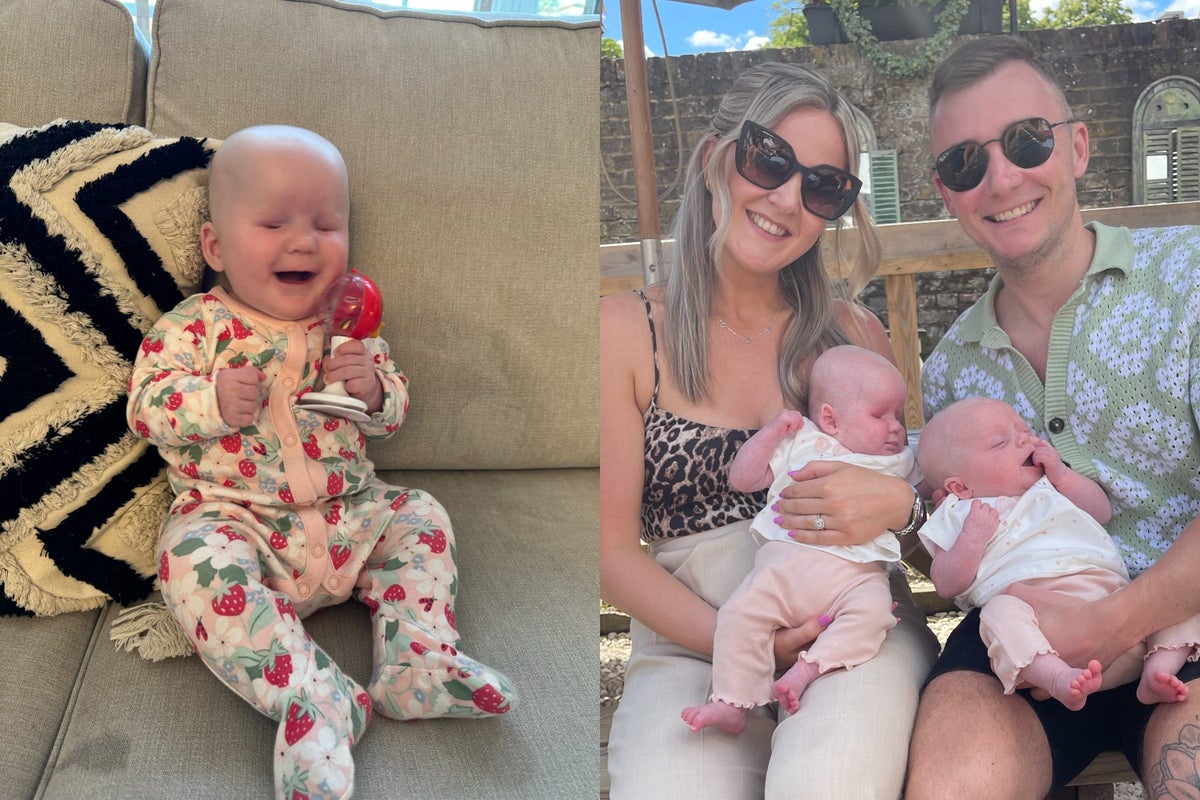Bilateral Anophthalmia: Challenges And Hope For Children Born Without Eyes

Table of Contents
Understanding Bilateral Anophthalmia: Causes and Diagnosis
Bilateral anophthalmia, also known as congenital anophthalmia when present at birth, is a condition where a child is born without eyes. Its rarity makes it a challenging condition to fully understand, but research continues to shed light on its causes and effective management.
Genetic Factors and Other Causes
The precise causes of bilateral anophthalmia are often complex and multifaceted. While some cases result from a single gene mutation, others are linked to a combination of genetic and environmental factors.
- Genetic Factors: Several genes have been implicated in anophthalmia, suggesting a complex interplay of genetic inheritance. Mutations in genes responsible for eye development can disrupt the formation of the optic vesicles and other crucial eye structures.
- Environmental Factors: Exposure to certain teratogens during pregnancy, such as certain medications or infections, may also contribute to anophthalmia. Maternal health conditions during pregnancy can also play a role.
- Associated Syndromes: Bilateral anophthalmia is sometimes associated with other genetic syndromes, such as anophthalmia-microphthalmia syndrome or CHARGE syndrome (Coloboma, Heart defects, Atresia choanae, Retardation of growth/development, Genital and/or urinary abnormalities, Ear anomalies/deafness). Early diagnosis of these associated syndromes is crucial for appropriate management. Prenatal diagnosis is possible in some cases, offering families vital information before the child is born.
Diagnostic Processes and Early Intervention
Diagnosis of bilateral anophthalmia often begins with prenatal ultrasound scans, which may reveal the absence of eye structures. Postnatal examination by an ophthalmologist confirms the diagnosis. Early intervention is critical, paving the way for access to essential services like:
- Prenatal Ultrasound: Routine ultrasounds during pregnancy can identify the absence of eyes in some cases.
- Postnatal Examination: A thorough ophthalmological examination after birth definitively confirms the diagnosis of bilateral anophthalmia.
- Specialist Referral: Prompt referral to specialized teams, including ophthalmologists, developmental pediatricians, and therapists, is crucial for appropriate management and support. Early intervention programs are key to a child’s optimal development.
Developmental Challenges Faced by Children with Bilateral Anophthalmia
The absence of vision significantly impacts a child's development across various domains. Early intervention and tailored support are crucial in mitigating these challenges.
Sensory and Motor Development
The lack of visual input profoundly affects sensory and motor development.
- Sensory Integration: Children with bilateral anophthalmia rely more on other senses, such as hearing and touch, to understand their environment. Sensory integration therapy helps process and integrate this sensory input effectively.
- Motor Skills: The development of motor skills, such as hand-eye coordination (which becomes hand-body coordination), balance, and spatial awareness, is affected. Occupational therapy (OT) and physical therapy (PT) are invaluable in addressing these issues.
- Adapted Toys and Play: Adapted toys and play activities are essential for promoting motor skill development and spatial understanding.
Social and Emotional Development
Social and emotional development can be impacted by the absence of sight, requiring specialized support and understanding.
- Social Skills Training: Social skills training can help children with bilateral anophthalmia interact confidently with their peers.
- Self-Esteem Building: Building self-esteem is crucial, focusing on celebrating their strengths and abilities.
- Peer Support Groups: Connecting with other children facing similar challenges offers invaluable emotional support and a sense of belonging.
- Family Support: Strong family support networks play an essential role in the child's emotional well-being.
Hope and Support for Children with Bilateral Anophthalmia: Treatment and Technologies
Despite the challenges, significant advancements in assistive technologies and therapeutic interventions offer hope for children with bilateral anophthalmia.
Assistive Technologies and Adaptive Strategies
Several assistive technologies help children navigate their world more independently.
- Echolocation Training: Some children learn echolocation, using sound reflections to perceive their environment.
- Mobility Aids: Specialized canes and other mobility aids enhance independence and safety.
- Sensory Aids: Sensory substitution devices help convert information from one sense (e.g., sound) into another (e.g., tactile).
- Adaptive Learning Techniques: Educators use adapted learning techniques that emphasize auditory and tactile learning.
Therapeutic Interventions and Support Systems
A multidisciplinary approach involving various therapies is fundamental.
- Occupational Therapy (OT): Addresses fine motor skills, hand-eye (hand-body) coordination, and adaptive techniques.
- Physical Therapy (PT): Focuses on gross motor skills, balance, and mobility.
- Sensory Integration Therapy: Helps process and integrate sensory information effectively.
- Support Groups: Connecting with families and individuals facing similar challenges provides invaluable support and resources.
- Early Intervention Services: Access to early intervention programs is critical for optimal development.
Conclusion
Bilateral anophthalmia presents unique challenges for children and their families. However, with early intervention, appropriate therapies, assistive technologies, and strong support systems, children can thrive and lead fulfilling lives. The unwavering spirit of these children and their families serves as a powerful testament to the human capacity for adaptation and resilience. Learn more about bilateral anophthalmia today. Find support for your child with bilateral anophthalmia through relevant organizations and resources. Share this article to raise awareness of bilateral anophthalmia and the hope it offers. Together, we can empower children born without eyes to reach their full potential.

Featured Posts
-
 Sylvester Stallone Regrette T Il Cobra Le Thriller Culte Des Annees 80 Sous Le Microscope
May 12, 2025
Sylvester Stallone Regrette T Il Cobra Le Thriller Culte Des Annees 80 Sous Le Microscope
May 12, 2025 -
 Okikj I Negoviot Smeshen Susret So Kevin Khart
May 12, 2025
Okikj I Negoviot Smeshen Susret So Kevin Khart
May 12, 2025 -
 Mueller Open Voor Nieuwe Club Na Bayern Welke Competitie
May 12, 2025
Mueller Open Voor Nieuwe Club Na Bayern Welke Competitie
May 12, 2025 -
 Zayavlenie Putina Dzhonsonu O Rossiyskikh Atomnykh Podlodkakh
May 12, 2025
Zayavlenie Putina Dzhonsonu O Rossiyskikh Atomnykh Podlodkakh
May 12, 2025 -
 Bundesliga Abstieg Bochum Und Holstein Kiel Leipzigs Cl Traum Geplatzt
May 12, 2025
Bundesliga Abstieg Bochum Und Holstein Kiel Leipzigs Cl Traum Geplatzt
May 12, 2025
